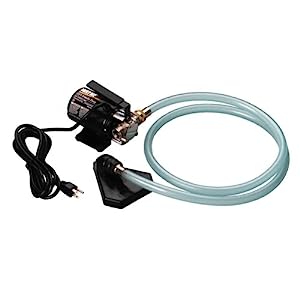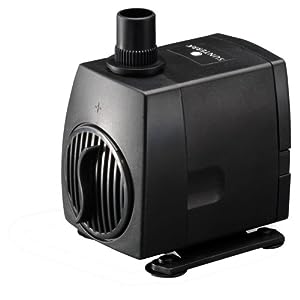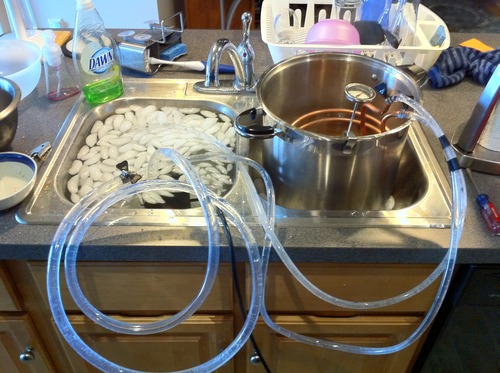So what im hearing is that you dont like the idea? Mine works great and hasn't given me any problems. I'm quite aware that these have been around for some time and also aware of sanitation issues. I have found that if rinsed properly and sanitized before hand just like any other chiller I have used, this one performs FAR better than a 1 or 2-stage immersion chiller and is far more simple than a pump system.
As to the sanitary "test" I havent got the slightest idea what your talking about. I only meant that the beer is most susceptible to contamination between 180 and 90 degrees and the more you can control the enviroment your beer is in during that period the better off you are.
Third, mine uses less copper and doesn't leave the beer exposed while cooling.
What do you use?
I would scrap the immersion chiller all together. I just finshed my chiller and broke it in this morning and it worked like a charm. I wont save you much water but it's very controlled and sanitary and doesnt cost much.
The only idea I didn't like was the suggestion to "scrap" the IC, and switch to whatever you call your hybrid chiller based on it being "sanitary" and "controlled", when the CFC style chiller's main drawbacks are the difficulties in cleaning/sanitizing them and controlling outflow temps. You acknowledge sanitation issues in your latest response, but do not really specify which ones or how you "properly" sanitize it.
The sanitary test I referred to your hybrid chiller not passing was a hypothetical/fantastical test, and was purposely as vague as your claim that your chiller was "sanitary", contrary to that style of chiller.
There are many trade offs to consider when choosing a chiller, and it is confusing enough without vague or misleading information. I was trying to make sure that the traits of all styles of chillers, yours and others, were presented accurately.
Your style of chiller is indeed simpler than an ice bath IC in that it does not require a pump. It is somewhat more sanitary than an IC in that it is possible to have sterile hot wort chilled and routed to the fermenter in a closed environment. It does, however, have sanitation/cleaning issues that an IC doesn't have, and those are how to clean the insides and fittings, and sanitize the hoses if you don't use a pump.
An IC is sanitized by placing it in the boil for a few minutes. If using a pump, the transfer hose can be recirc'c with boiling wort to take care of the transfer sanitation issues. While chilling with an IC, there is exposure in the kettle. The only feasible option is to put a notched lid on while chilling.
Temperature control is much easier with an IC- you watch the temp drop and stop when you want. A true CFC requires only a bit more work at first to tune it to the desired output temp. Your "counter flow" hybrid is not even "counter flow" since the cold input is in the same immediate area as the hot input, and unless much more chill water volume is used versus a true CFC, it will not maintain consistent output temps due to heating effects during chilling. (Conserving was one of the main issues the OP had with his chiller.) If one were to fill your hybrid chiller with ice water, it would require almost constant adjustment to maintain a stable output temp since the temp of the chill water will increase as the chilling proceeds, causing output temp variation and corresponding control input to correct it.
As for being able to get the wort to "whatever temp you want", for any chiller that is highly dependent on time, temp of chill water, amount of chill water, etc. In places with 70F+ tap water, your "whatever temp" is difficult to get to if it is below 80F. See above issues using ice in your hybrid chiller for why it would have issues if ice were needed due to hot tap water.
Your chiller may indeed use less copper and cost less, but that did not appear to be one of the OP's issues as he was going to buy a pump and build a closed 2 stage IC with dual coils. (Which I informed him about the issues involved, just like you referenced regarding 2 stage IC in your experience).
Besides price, ease of temp control, complexity, effect on hops, ease of adjusting for chill time, etc., there are other factors that can be considered when choosing a chiller style- late hopping with an IC, or hop-back with a cfc/plate; cold break removal, or not; whirlpooling, or not; a small volume of wort immediately chilling while remainder remains near boiling (DMS issues?), or entire batch chilling more slowly, but with a consistent boil time for batch.
A bit of reading/analysis on the various chiller styles and their advantages/drawbacks is all that is needed to pick one, or maybe more than one for brew type specific chillers.





